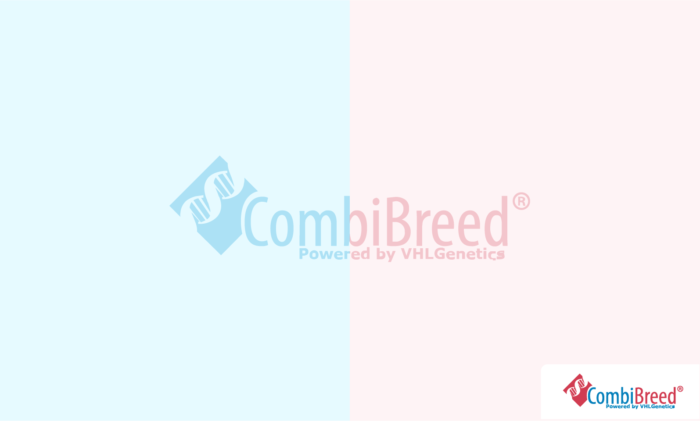
€0,- €0,- hors TVA
Only available in bundles
Coat colour in dogs is controlled by a wide range of different genes working together.
10 working days
Excl €5,95 shipping and administration per order (incl. VAT)
Only available in bundles
Caractéristiques
| Breeds | |
|---|---|
| Gene | |
| Chromosome | 5 |
| Mutation | c.816_817delCT |
| Mode of Inheritance | Autosomique récessif |
| Organ | |
| Specimen | Écouvillonnage, sanguin EDTA, sanguine hépariné, sperme, tissu |
| Also known as | E-locus |
Informations générales
Coat colour in dogs is controlled by a wide range of different genes working together. These genes are often referred to as ‘loci’. The Extension, or E-Locus, corresponds to the gene ‘melanocortin 1 receptor’ (MC1R), which is involved in the regulation of pigment production. Mutations affecting the E-locus often result in a lightening of the coat, from black or brown to red, yellow or even white.
This E-locus variant, designated as e^3, is a recessive mutation observed in the Alaskan Husky and Siberian Husky. Related variants are known to occur in the Irish Setter, Labrador Retriever, Golden Retriever, and in the Australian Cattle Dog. Note that some Huskies may instead carry variant e^1, or a combination of e^1 and e^3. These combinations will also result in the white colour described here.
Caractéristiques cliniques
Affected Huskies (e/e) have an extremely pale yellow coat that can sometimes be designated as white.
Additional Information
Coat colour is an intricate trait that involves a combination of multiple different genes. Testing for a range of different loci will give the most complete prediction of a dog's coat colour genetics.
Références
Pubmed ID: 29932470
Year published: 2018
Omia ID: 1199
Omia variant ID: 997